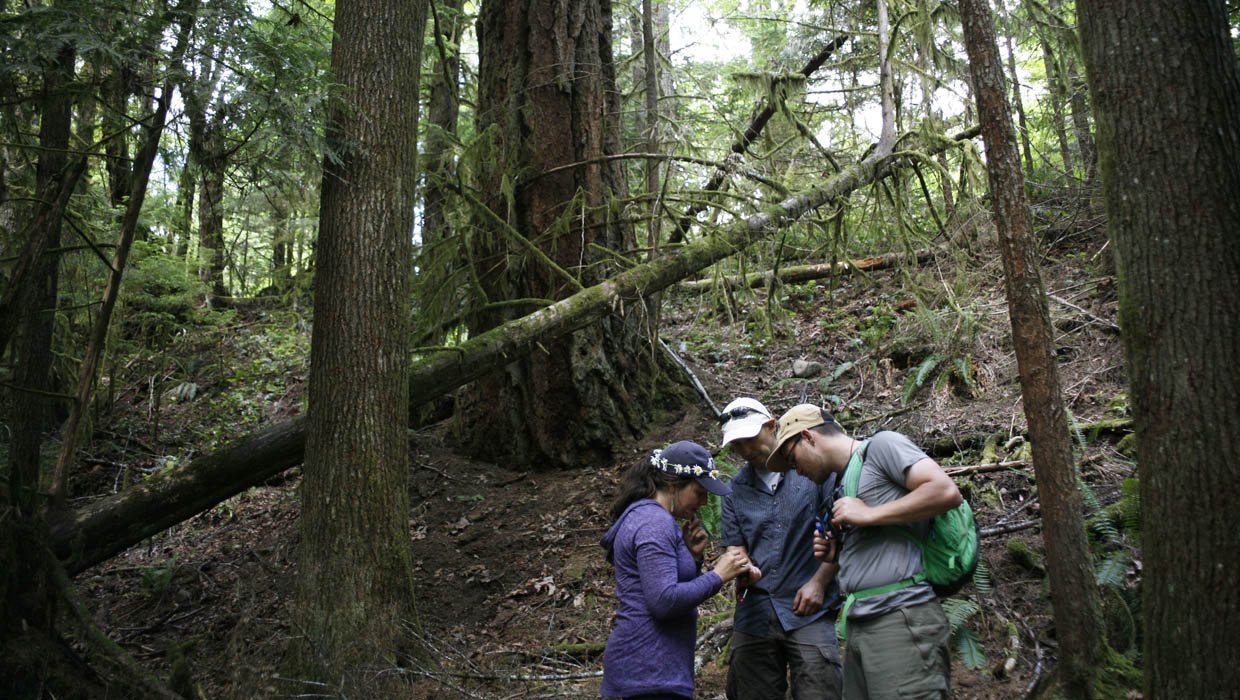On June 21st, TLC staff members Torrey and Andrew, summer intern Karen and volunteer Liam trekked to Duncan to visit the Caromar Covenant for its annual monitoring. The team was armed with the mission to find the wetland that was documented the previous summer, in order to conduct repeat photography. The group followed along old logging roads where use by backcountry ATV riders was evident. Some garbage was found, including a whole car! Despite this dumping they discovered a diverse list of wildflowers such as twin flower, dense-flowered lupine, veronica, self-heal, tiger lily, baldhip rose, Nootka rose and western trumpet honeysuckle, as well as not so native foxglove and oxeye daisy. The forest was lush with bloom!
The group hiked along the northern and western borders of the covenant to monitor for any edge effect disturbances from recent adjacent house developments and then headed down into the valley to the wetland. Along the way they discovered a magnificent Douglas-fir wildlife tree which was 2 meters in diameter! Also known as a snag, wildlife trees continue to hold ecological value after their death. Douglas-fir can remain standing up to 70 years after its death and provide habitat and nutrition for birds, bears, squirrels, mink, amphibians, insects and of course mosses, lichens and fungus! As the tree begins to decay, primary excavators such as Pileated woodpeckers arrive to make nests and raise their young. After a season the woodpeckers leave and the sapsuckers arrive to use the empty nest to raise their young and feed from the tree. This change of inhabitants continues with different species as the decay continues. Nothing in the forest goes to waste. Even after the tree loses its branches, the trunk breaks in half and then in half again and finally falls to the ground the tree becomes what is called Coarse Woody Debris (CWD) and begins a new cycle in which it becomes nutrients for the forest floor, becomes host for red huckleberry, Douglas-fir seedlings, mosses, lichens, fungi, insects and amphibians. To find such a large tree in a forest which was recently logged was a fantastic discovery! TLC collects data for wildlife trees such as species, size and decay class for reference to use for bird species inventories and other possible surveys.
After traversing the crumbly slope to the wetland, the group conducted repeat photography of the wetland which was lush with sword ferns, lady ferns, bracken ferns, skunk cabbage, salal, Oregon grape, vanilla leaf, devils club and mosses. Karen even spotted a frog leaping into the water for a swim. Human disturbance along this area appears non-existent which is great news for this riparian zone!




















